Visiting Rumicolca and Pikillaqta was an impromptu one, something I arranged at the last minute. I was making plans to get to Machu Picchu which took more organising than I had though – just to get there. Arrangements done I had the day free but meant my morning had been taken up finalising details. There were a few options on the cards. A. Tipon; a smallish Inca site with terraces and a few fountains. Or B. Rumicolca and Pikillaqta which are both pre-Inca sites; I didn’t want to rush the day so chose option B.
Getting to Rumicolca and Pikillaqta
These are two separate sites; both are on the same road (3S highway) towards Andahuaylillas and Urcos (same road to go to Rainbow Mountain and the Red Valley). Rumicolca is about 32km from Cusco and Pikillaqta a 1.7km walk back in the direction of Cusco. I’ve wracked my brain and checked my notes but cannot for the life of me remember if I used a colectivo or bus to get there! I definitely used a bus to get back to Cusco that I’m certain of! I’m reasonably certain I used a bus to get there but from where I have no idea! I think I used one of the blue and white bus to get there as that’s the bus I used to get back. Anyway, had I known what to expect at Rumicolca and Pikillaqta I would have stopped at Tipon too; there was more than enough time! Doubtfully this will be a long blog post.
Rumicolca
Getting back on track, the bus/colectivo (?) dropped me off what looked to be in the middle of nowhere. Seeing what looked like massive stone walls and headed to them…welcome to Rumicolca. There’s not much to see at Rumicolca, it’s the smallest site and least complicated. However, nobody knows its exact purpose. Yes, I was underwhelmed by the Rumicolca. Having been to so many exquisite places before this, this wasn’t as splendid, but I have no regrets going.
In short, Rumicolca looks like a massive wall with two entrances. From a distance the middle section reminded me of the step pyramid in Saqqara (much smaller! ?). These aren’t just some garden walls, no, these create a statement. Well-built for permanency, around 7m high, staunch and sturdy with 4 levels each narrowing as you go up. They include Inca stairs allowing people to move up and down them with ease.

History
Deriving its name possibly from Quechua “rumi” stone, “qullqa / qulqa” deposit, storehouse. The Wari used to occupy this region before in the Inca, a pre-Inca civilisation around 550 – 900AD. Looking at Rumicolca it does look like two combined building techniques. Firstly, more rough type stones of smaller proportion. Secondly, an outer layer of more finely cut larger stone. What doesn’t seem to be disputed is that the Wari first built this as part of an aqueduct. At the top of the wall is a distinct furrow running from end to end. Maybe the Inca’s reinforced the structure adding large doors to the two openings.
I can imagine this being used as an entrance to the Inca Empire’s capital. It would have been intimidating, telling any visitors they are entering a powerful and sophisticated people. Even though the Rumicolca is in great condition archaeologist aren’t in agreement if it was primarily an entrance gate, aqueduct or both – I’d day both. That is a very short history I know, other than folklore not much else is known.


Pikillaqta
Crossing the road (S3 highway) and a short walk get you to Pikillaqta. You know when you’ve arrived when you get to a rough stone undulating wall, 3 – 4m high. This is a large and intriguing site. At first, I didn’t think much of it then the more I explored the more it made me ponder. The archaeological area is 650m by 230m, however the actual enclosed area is three times the size. What I mean is there are 3 main areas (that’s my interpretation). Firstly, a massive rectangular area walled area. Secondly, inside that this is another walled rectangular area (the archaeological site). Thirdly, an area outside the main larger walled area.
The external wall is a dual wall running parallel with each other, creating a corridor between them. This is wide enough to drive a small car between, it feels like a road that would be used to patrol around the circumference of the site. I didn’t explore the third area, no real access and totally overgrown, but there were dozens of structures. They looked symmetric, like repeated square enclosure – if you get a chance take a look at satellite pictures of the area.
The place intrigued me because of the size, and the huge parallel walls around the rectangular circumference. Either this place was a protected sacred place or, heavily fortified urban area. I can’t think of any reason why you would need to fortify to such an extent unless the Wari had trouble with their neighbours, who I don’t know. Pikillaqta was occupied between 550 – 1100AD (built around 650AD), a substantial period, even so it seems the place was never completed – that’s odd to me. Having read up about it the place was mainly used for ceremonies, that to me doesn’t make sense either.
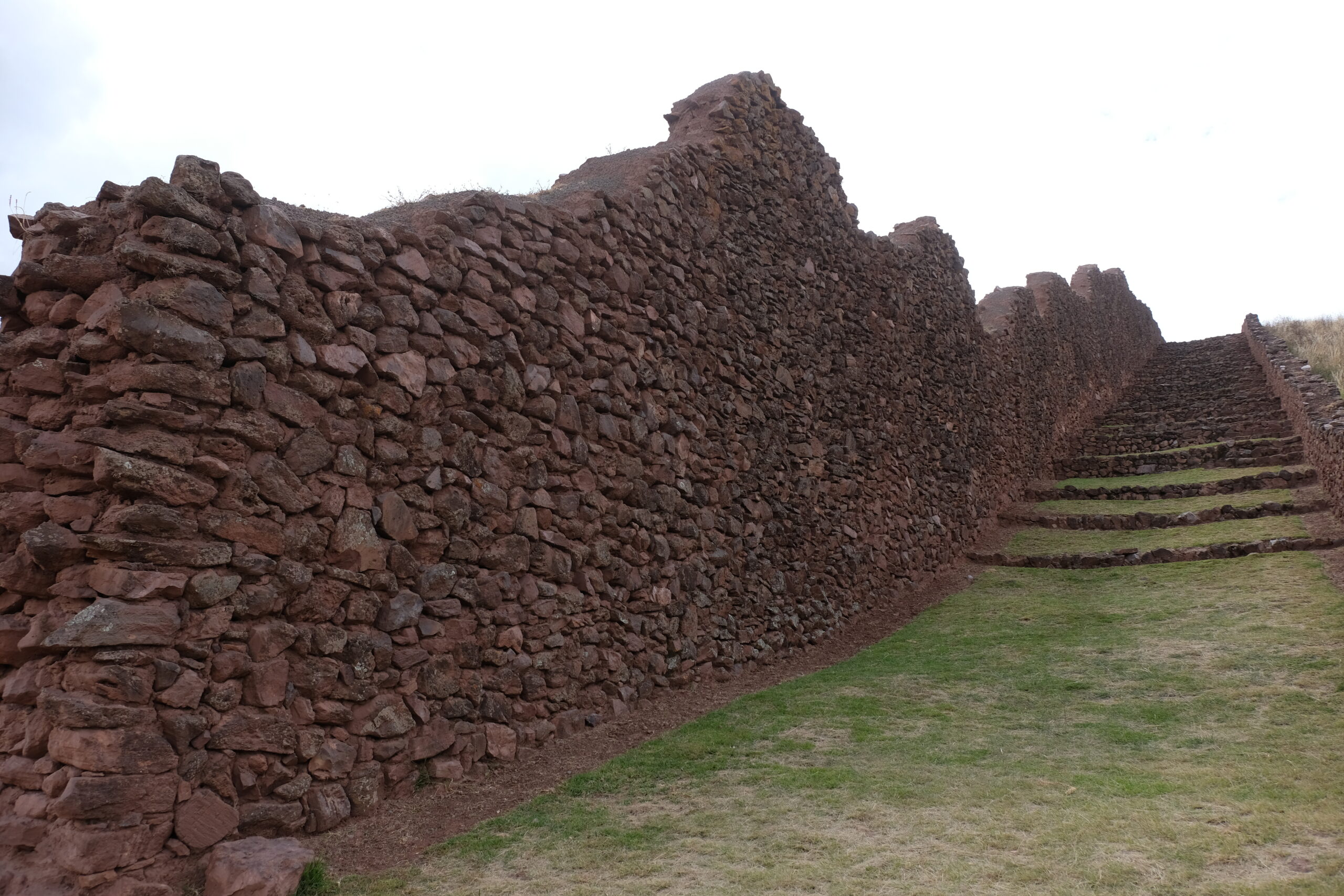

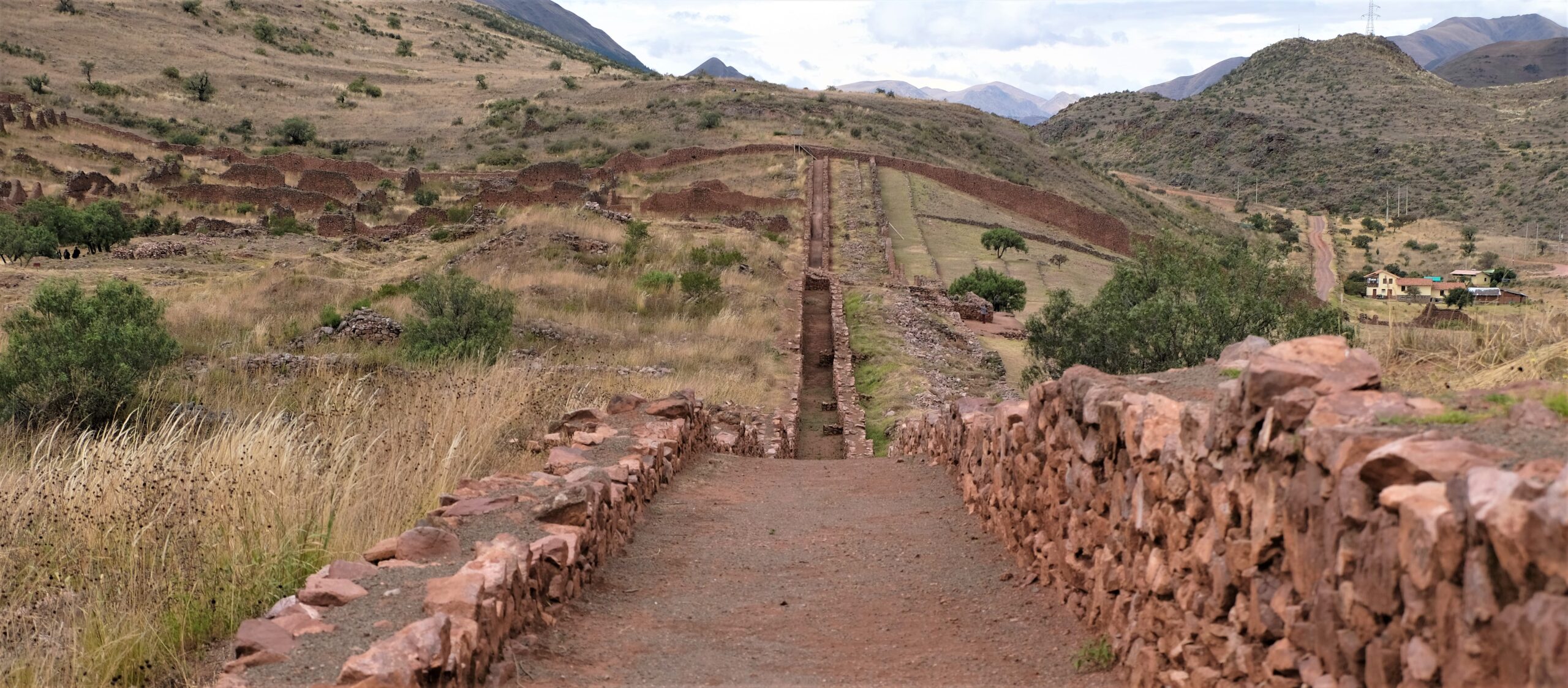
History
In Quechua “piki” means “flea”, “llaqta” means “a place” (village, town, community, country, nation), “flea place”, with spelling variations of Piki Llacta, Pikillacta, Piquillacta, Piquillaqta. There isn’t much other than hypothesis from limited archaeological excavations. Very little archaeological findings have been found, as few copper, silver and stone (green/turquoise) statuettes/figurines. With the few tombs that have been found were robbed long ago of any valuables.
From what was likely an already use location, construction of what we know as Pikillaqta today probably started around 650AD. There are/were five entrances (I only saw 2), each with guardhouses/towers. Considering the circumference wall fortifications Pikillaqta must have been as guarded as Fort Knox! Inside the main enclosure is difficult to decipher (for me), with little tangible information other than a few information boards and the trustworthy Wikipedia. The most extensive excavations were done by Gordon McEwan; from whom the majority of hypothesise about Pikillaqta derive. I’ll add my unfounded thoughts to McEwan’s.
Within Pikillaqta there are a few courtyards (referred to as a patio), one seemingly to be the largest and in the centre of the enclosure. Here it is thought was where large gatherings &/or ceremonies were held. Chicha (local maize beer) seems to have been used in these ceremonies/gatherings just as the Inca use it – coincidentally just as saka was used by the Japanese (take a look at my blog about the sake barrels in Yogi Park, Tokyo). To give you a scale of construction, there are at least 501 building/structures inside the Pikillaqta complex, that’s a lot. Personally I think more than just ceremonies where happening here, I don’t even think Sacsayhuamán has that many buildings (I’m guessing)!
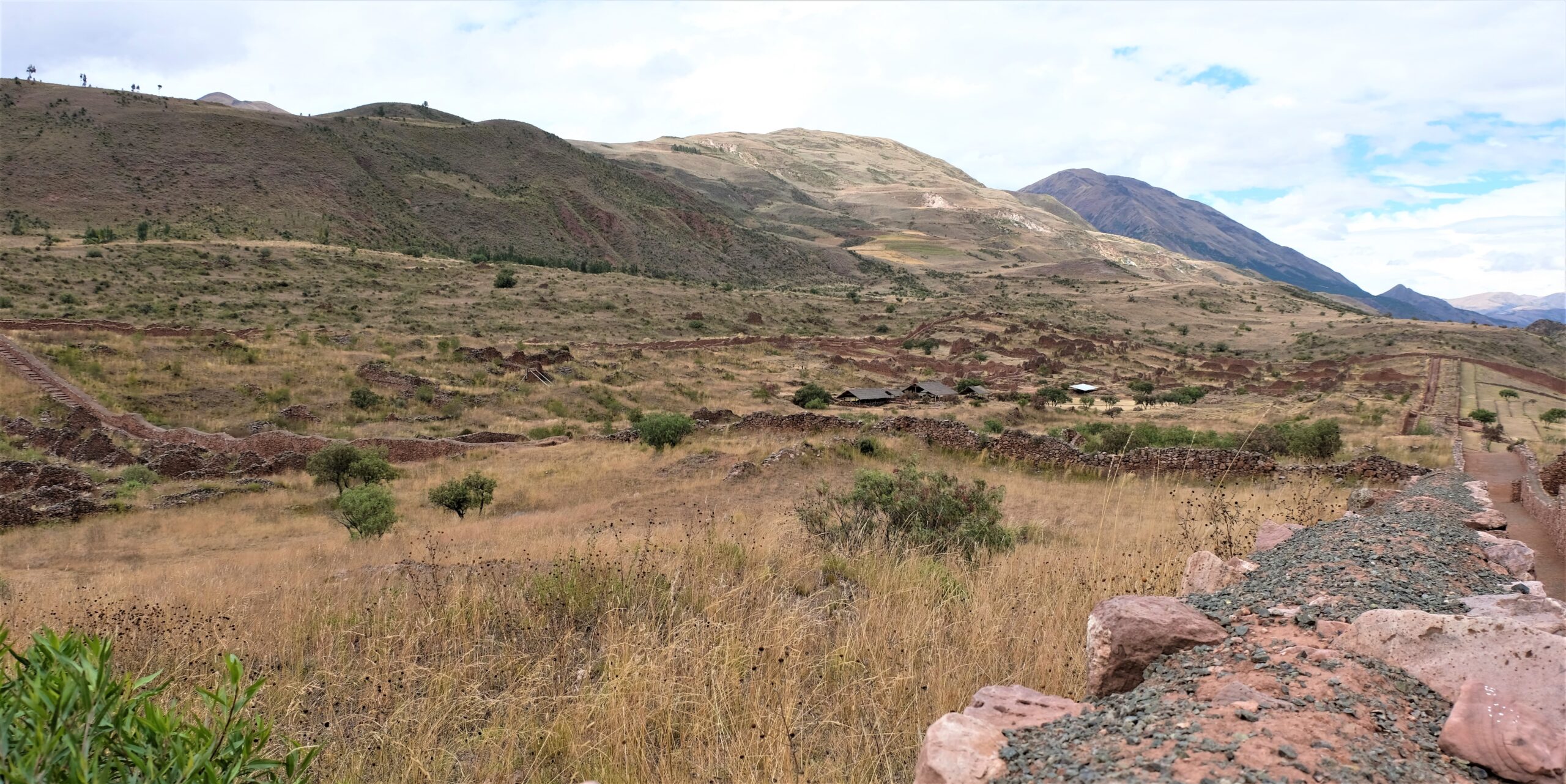
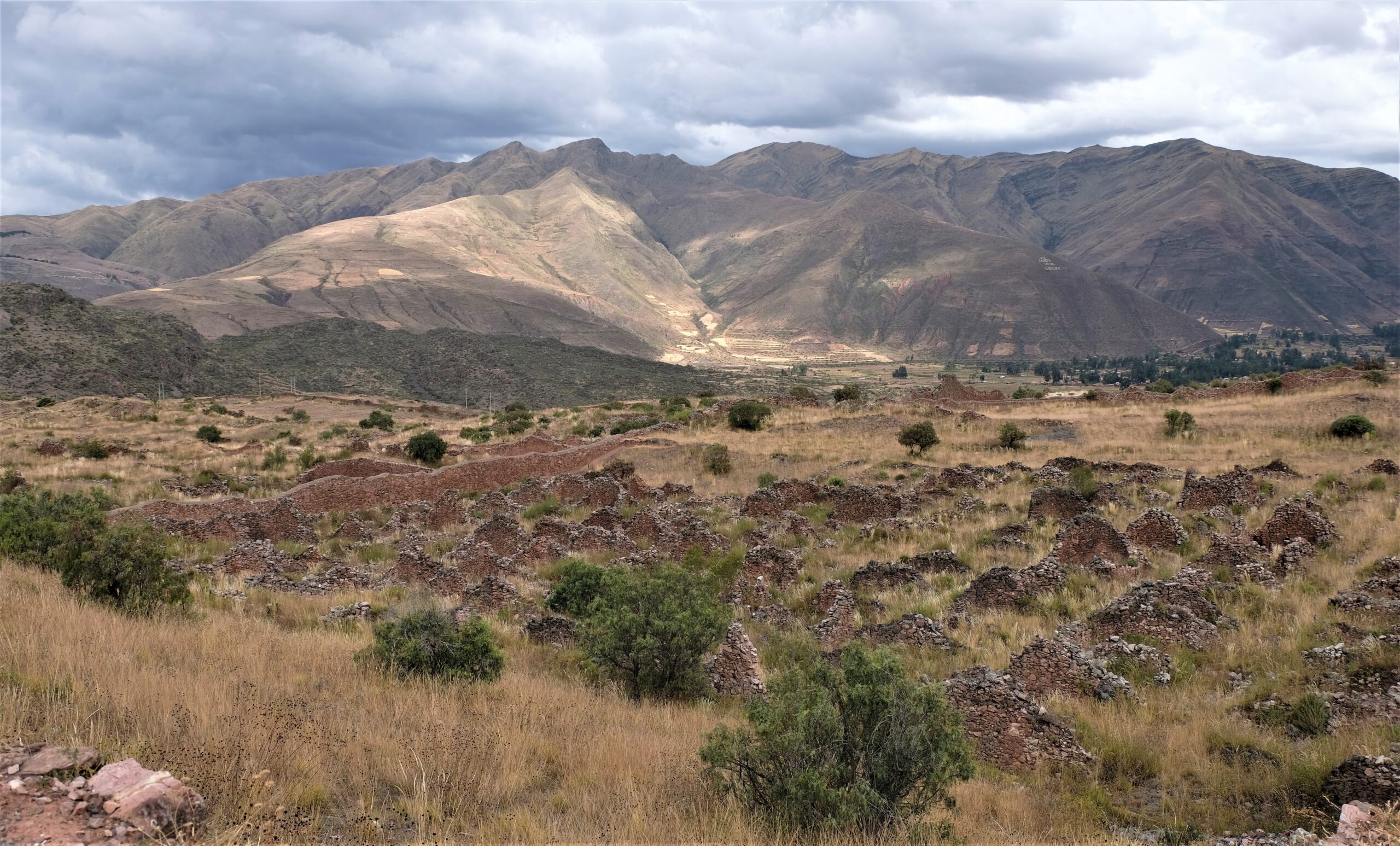
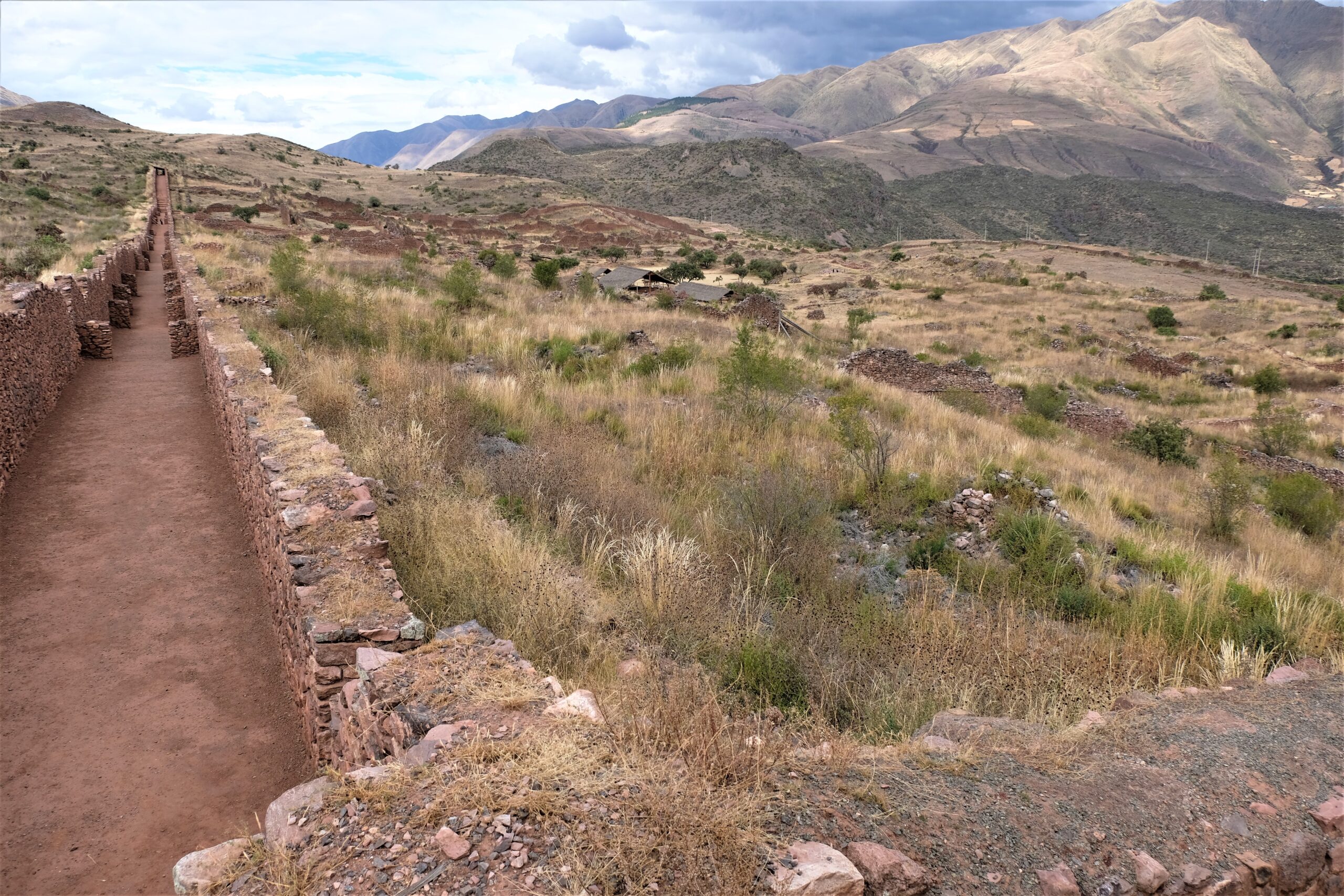
The end of Pikillaqta
Pikillaqta’s demise is odd to say the least; it was abandoned twice. Firstly, it was abandoned before all the structures were completes, seems odd as it was occupied over such a long period of time. Second time around seems to be because of a fire; whether this was deliberate of not isn’t known – there is evidence to imply it was deliberate. Similar to some Aztec and Mayan sites, when a sacred location has lost its “power” they are burnt down.
Only a few buildings remain giving a glimpse of what a completed building would have looked like. Walls and floors plastered in smooth mud, then white-washed using gypsum – it could have looked like Santorini ?. Adding to the theory that is was deliberately burnt and abandoned is that many rooms/buildings doorways were purposely sealed off.
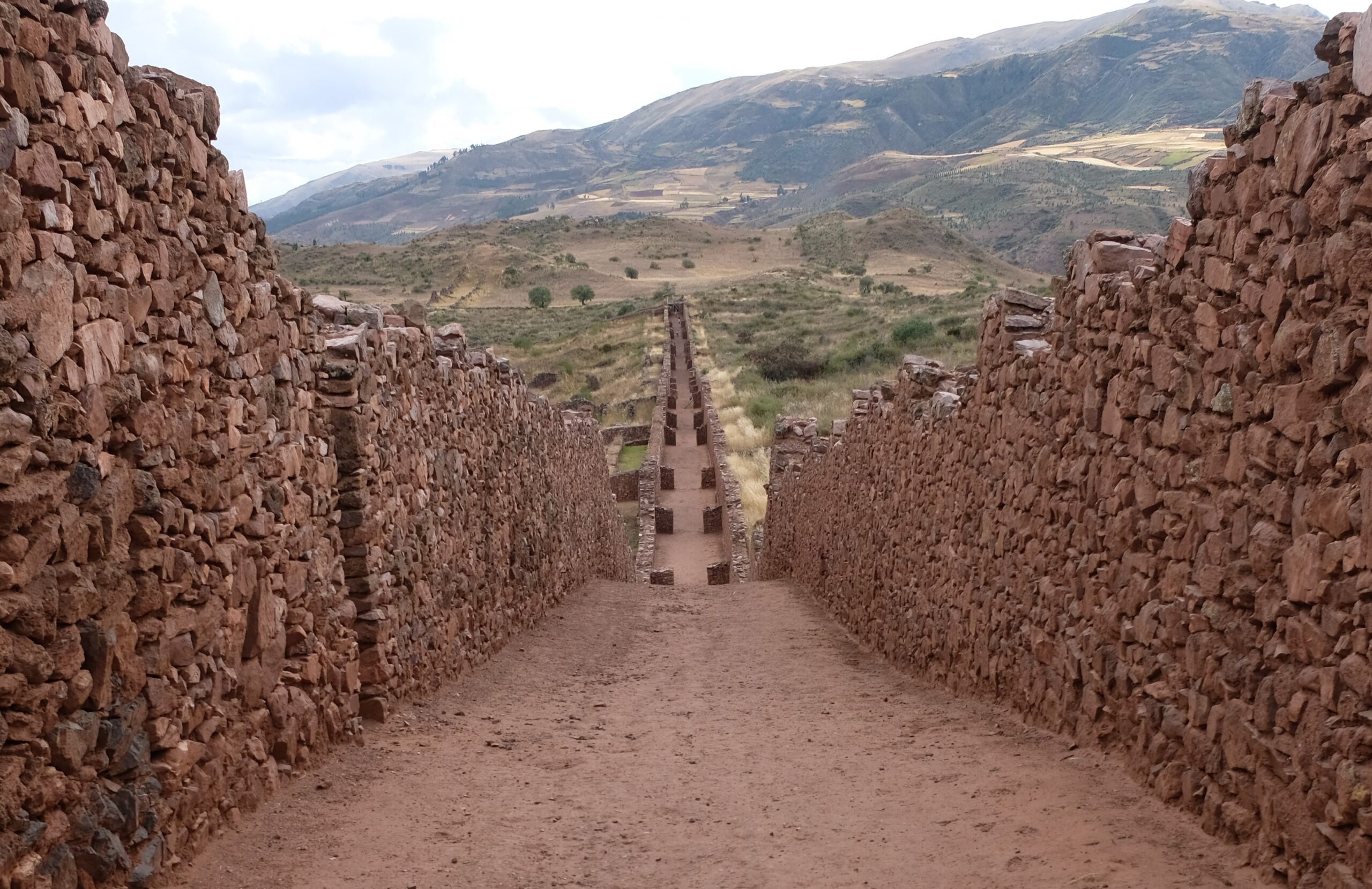


Wari and Inca similarities
Towards the centre and South East are many (18 I believe) large buildings with high walls, inside they have numerous niches, just like Inca sacred sites. If similar to Inca sites, then the niches could have contained mummies &/or sacred objects. As with the Incas, Viracocha (see sculpture cut into the mountain in Ollantaytambo) was their central deity, controlling life and death – the creator god.
There are two things I didn’t get to explore at all during my time in the Inca Empire. The first was their intentional cranial deformations. The second was Quipu / khipu; a form of record keeping using rope of different lengths with different knots tied into them. Like a sort of accounting and messaging system that could be transported across any distances. Of the cranial deformations, this was done pre and during the Inca Empire. At least four skeletal remains were found at Pikillaqta where intentional cranial deformation was found. This is where the head is bound from an early age to intentionally shape the skull into a more elongated shape. Because of the location of the skulls within the complex it is most likely they were from high-status individuals.
If cranial deformation isn’t interesting, it is also likely that the Wari as with the Inca performed human sacrifices with some of their ceremonies. Child sacrifices were used for the most important ceremonies/events like the death of a Sapa Inca or to end a bad drought/famine. On the death of Huayna Capac it is thought 4000 people were sacrificed. These sacrifices are known as Capacocha or Qhapaq hucha; possible translation “solemn sacrifice” or “royal obligation – that’s another thing I didn’t have any time to look into.



My Cusco / Cuzco day trips come to an end
Rumicolca and Pikillaqta was the last of my day trips before I left the city, to my much anticipated visit to Machu Picchu. Machu Picchu, Petra and Giza (and a few others) had been on my wish list since I was a child. I had been fortunate to see two of them already and was about to see the third. My next blog with be the finale of a two-part series about Cusco. Part 1 was about the city and some of its sites, Part 2 will be about the many celebrations and festivals held around Plaza de Armas. If Rio de Janeiro is the carnival capital of Brazil, the Cusco must be the carnival capital of Peru. Not as flamboyant as Rio but no less colourful with the whole region joining in!
PS – on my way back from Pikillaqta, the bus dropped me off somewhere near the university. Strolling back up into town I passed an interesting monument/statue. An Inca person holding a quipu/khipu with an inscription below ama suwa, ama llulla, ama quella (sometimes spelt “Ama Sua, Ama Llulla and Ama Quella”); this was the Inca mantra, their ethos to hold above all (I think this is true). It means “do not steal, do not lie, do not be lazy” or “Don’t be a thief, Don’t be a liar, Don’t be lazy”. If it is true, then it is no wonder the Inca’s were able to achieve what they did.
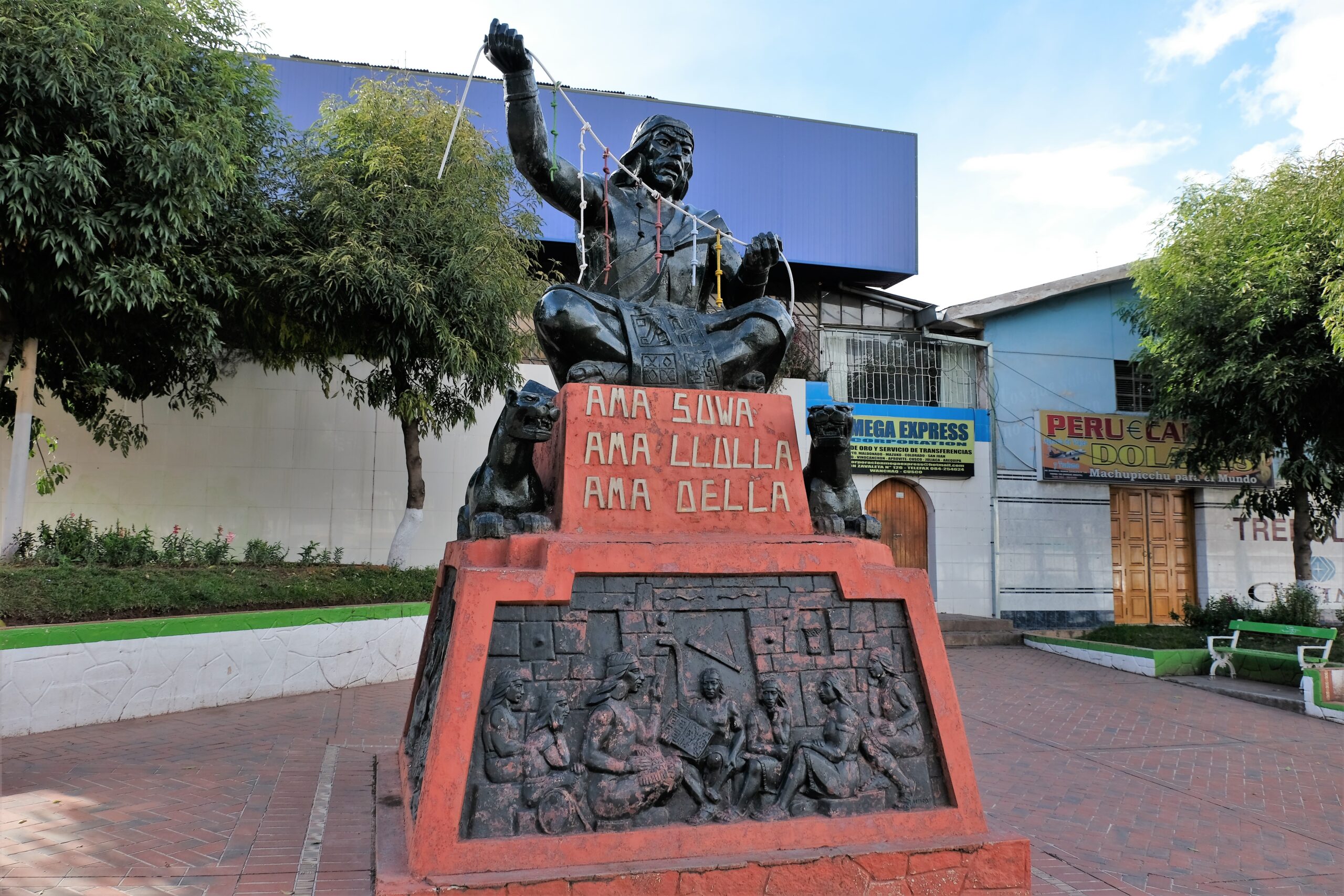
ama suwa, ama llulla, ama quella – “do not steal, do not lie, do not be lazy”
